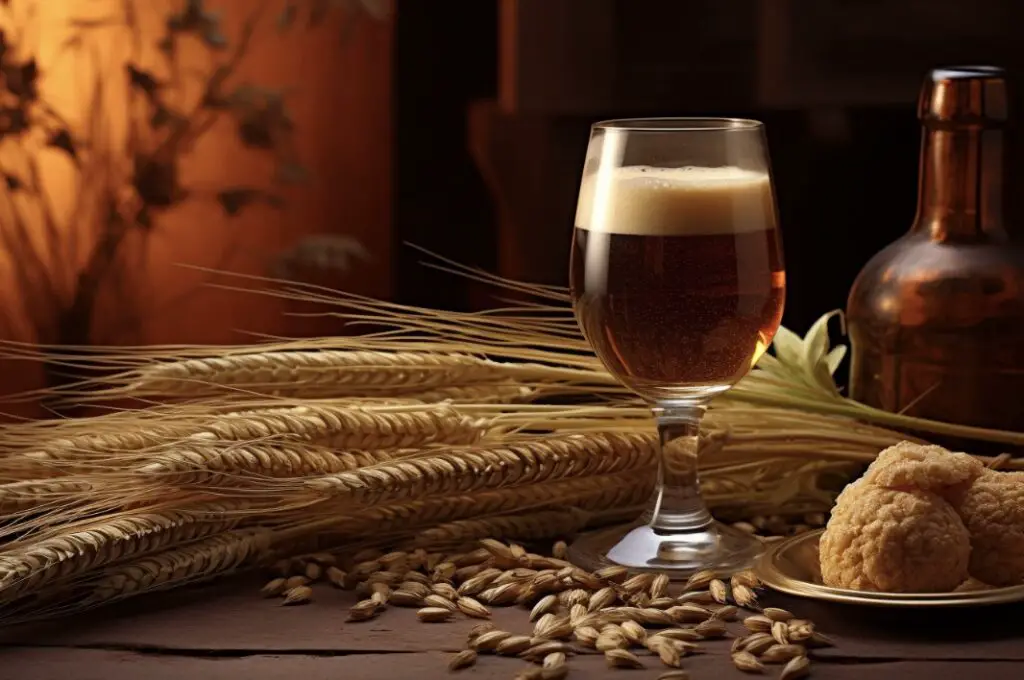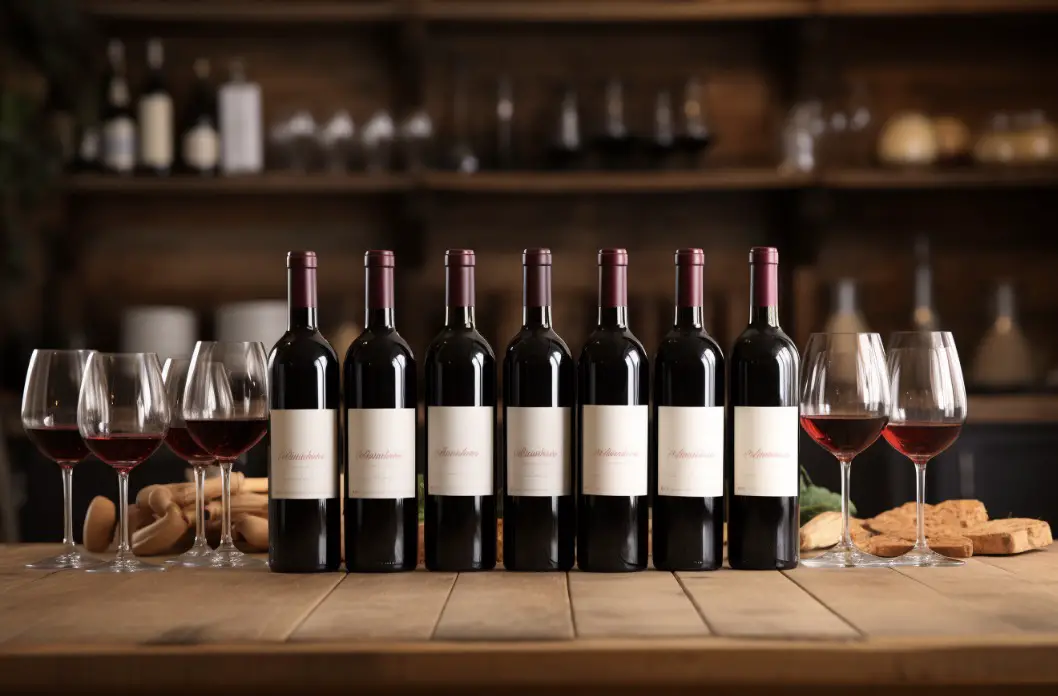Does barley wine go bad? The short answer is yes, but it’s not as simple as that.
As an experienced brewer and barley wine enthusiast, I’ve had my fair share of experiences with this unique and delightful beverage.
In this blog post, I will share my personal insights and knowledge about barley wine, its shelf life, proper storage, and how to determine if it has gone bad or not. So, sit back, relax, and let’s dive into the world of barley wine.
What is Barley Wine?
Barley wine, often referred to as a wine of the barley, is a strong ale with an alcohol content typically ranging between 8%-12% by volume. It gets its name from its wine-like alcohol content and rich, complex flavors.

Barley wines are known for their sweet, malty taste and dark, amber color. They are usually brewed with top-fermenting yeast and can be aged for several years, similar to fine wines.
This aging process allows the flavors to develop and mature, creating a more refined drinking experience.
The Aging Process of Barley Wine
One of the unique characteristics of barley wine is its ability to age gracefully. As barley wine ages, the flavors and aromas develop and become more complex.
This is due to the ongoing process of oxidation, which affects the beer’s taste and aroma compounds. Oxidation can produce rich, sherry-like flavors in the barley wine, and over time, the beer will mellow and become smoother.
Factors Affecting the Aging Process
Several factors can impact the aging process of barley wine, including:
1. Alcohol content: Higher alcohol content slows down the aging process, allowing the barley wine to be stored for longer periods.
2. Oxygen exposure: The presence of oxygen plays a crucial role in the aging process, as it aids in the oxidation of the beer. However, too much oxygen can lead to off-flavors and spoilage.
3. Temperature: Ideal storage temperatures for aging barley wine are between 50-60°F (10-15°C). Higher temperatures can result in faster aging and potential spoilage.
4. Light exposure: Exposure to light, especially UV light, can cause the breakdown of hop compounds, leading to skunky off-flavors.
The Shelf Life of Barley Wine
Barley wine has a relatively long shelf life compared to other beer styles. Many barley wines can be aged for 5-10 years or even longer, depending on the factors mentioned above.
However, not all barley wines will age well, and some may reach their peak flavor within a few years. It’s essential to be mindful of the specific barley wine you are storing and the brewer’s recommendations for aging.
How to Store Barley Wine Properly
Proper storage is crucial to ensure that your barley wine ages gracefully and does not spoil. Here are some tips for storing your barley wine:
1. Store in a cool, dark place: As mentioned earlier, the ideal storage temperature for barley wine is between 50-60°F (10-15°C). A cellar, basement, or a temperature-controlled refrigerator are suitable options.
2. Avoid direct sunlight: Keep your barley wine away from direct sunlight, as UV light can cause skunky off-flavors.
3. Store bottles upright: Storing bottles upright minimizes the surface area exposed to oxygen and reduces the risk of oxidation.
4. Maintain a consistent temperature: Fluctuating temperatures can negatively impact the aging process, so try to maintain a stable storage environment.
Signs That Your Barley Wine Has Gone Bad
While barley wine has a long shelf life, it can still go bad if not stored properly or aged for too long. Here are some signs that your barley wine may have gone bad:
1. Unpleasant aroma: If your barley wine smells like vinegar, wet cardboard, or rotten eggs, it’s likely spoiled.
2. Off-flavors: If the taste of your barley wine has become sour, metallic, or overly sweet and syrupy, it may have gone bad.
3. Change in appearance: If your barley wine has become cloudy or has visible sediment, it may be a sign of spoilage.
What to Do with Barley Wine That Has Gone Bad
If you suspect that your barley wine has gone bad, it’s best to discard it. Consuming spoiled barley wine can result in an unpleasant drinking experience and may even cause gastrointestinal discomfort. However, if you’re unsure if your barley wine has gone bad, it’s always a good idea to consult with an experienced brewer or fellow barley wine enthusiasts.
Conclusion
In conclusion, barley wine can indeed go bad, but with proper storage and care, it can age gracefully and provide a delightful drinking experience for years to come. Here are 10 essential facts about barley wine:
1. Barley wine is a strong ale with an alcohol content typically ranging between 8%-12%.
2. It gets its name from its wine-like alcohol content and rich, complex flavors.
3. Barley wines are known for their sweet, malty taste and dark, amber color.
4. The aging process of barley wine is influenced by factors such as alcohol content, oxygen exposure, temperature, and light exposure.
5. Barley wine has a long shelf life compared to other beer styles, and many can be aged for 5-10 years or longer.
6. The ideal storage temperature for barley wine is between 50-60°F (10-15°C).
7. Proper storage techniques include storing in a cool, dark place, away from direct sunlight, and maintaining a consistent temperature.
8. Signs that your barley wine has gone bad include an unpleasant aroma, off-flavors, and changes in appearance.
9. If your barley wine has gone bad, it’s best to discard it.
10. Consult with experienced brewers or barley wine enthusiasts if you’re unsure about the quality of your barley wine.
With this knowledge, you can now enjoy your barley wine to its fullest potential, savoring the rich and complex flavors that this unique beverage has to offer. Cheers!
FAQs
Is Barleywine strong?
Yes, Barleywine is a strong beer. It typically has a higher alcohol content than most other beer styles, ranging from 8% to 15% ABV (alcohol by volume).
Does Barleywine need to be refrigerated?
Barleywine does not necessarily need to be refrigerated, but it can benefit from being stored in a cool and dark place. Like other high-alcohol beers, Barleywine can age and develop complex flavors over time. Storing it in a consistent temperature, ideally between 50-55°F (10-13°C), can help maintain its quality. However, if you prefer to drink Barleywine at a colder temperature, refrigeration is perfectly acceptable.
What level of carbonation is Barleywine?
Barleywine typically has a low to moderate level of carbonation.
Are Barleywines barrel aged?
Yes, Barleywines are often barrel aged. Barrel aging is a common practice for Barleywines, where they are aged in wooden barrels, typically oak, to enhance their flavors and develop complex characteristics. The aging process allows the beer to absorb the flavors and aromas from the wood, as well as any residual spirits that may have previously occupied the barrel. This results in a rich, smooth, and often boozy beer with notes of vanilla, caramel, and sometimes even hints of the previously stored alcohol.
Can you cellar Barleywine?
Yes, you can cellar Barleywine. In fact, Barleywine is known for its aging potential. When properly stored in a cool, dark, and stable environment, Barleywine can develop complex flavors and mellow out over time. The high alcohol content and robust malt character of Barleywine help it withstand the aging process. It is recommended to cellar Barleywine for at least six months to a year to allow the flavors to mature and harmonize.
How do you store Barleywine?
Barleywine should be stored in a cool, dark place with a consistent temperature, ideally between 50-55°F (10-13°C). It is best to store it upright to minimize oxidation and prevent the formation of sediment. Avoid exposing it to direct sunlight or extreme temperature fluctuations. Additionally, if the barleywine is bottle-conditioned, it can benefit from some aging, allowing flavors to develop and mellow over time.




